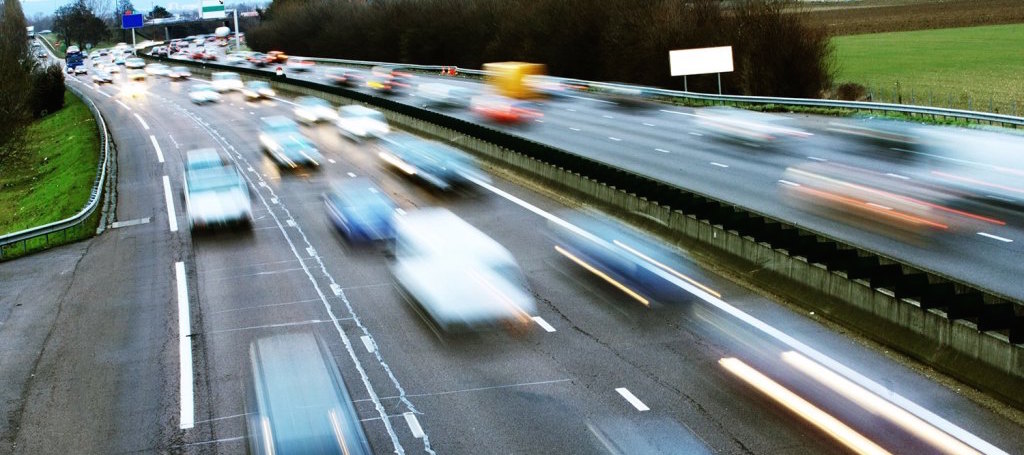
Can We Tackle Traffic Congestion & Climate Change with the Same Policy? Some Grist for the Mill

On this #WonkWednesday we explore the weird policy space between congestion pricing and carbon pricing. This recent Grist article by Ben Adler poses the important question: how best do we align our transportation policies with our climate goals?
In doing so, Adler debates the merits of potential distance-based road charging versus existing gas taxes. But the timely challenges Adler speaks to in his piece—growing traffic congestion, insufficient infrastructure funding, climate change and air pollution—are far more complex than an either-or solution. What really piqued our interest was thinking about the co-benefits (or maybe even conflicts) that a policy solution for one of these problems would create for the others.
Before delving into Adler’s thought-provoking piece, it might be helpful to review some of the relevant and inter-related terms:
Congestion pricing is a broad term for tools that charge drivers for road access with the objective of reducing traffic congestion. Prices that vary by time of day or by levels of congestion are most aligned with the objective. Tools include tolls for roads or specific lanes, charges to drive in a specific part of town, demand-based parking pricing and distance-based charging.
Distance-based charging (or VMT—vehicle-miles-travelled—charges) in particular uses GPS (or another technology) to record distances, and charges road users based on how much road they use. Oregon is currently experimenting with it as a way to fund their roads. It can be well aligned with road funding and congestion reduction goals.
Gas taxes charge road users based on the amount of gas they consume. Gas taxes are not proportional to the demand for road-space, and accordingly not well-aligned to addressing traffic congestion. Gas tax revenue can vary based on the price of gas, and based on how much gas their car uses since different cars have different fuel efficiencies (and some use no fuel at all). In the US, revenue goes to road infrastructure. In Canada, it goes towards general revenue but is nevertheless an important source of government income. Gas taxes are not adjusted with differences in time of road use (which is related to congestion). They are effective in reducing global and local pollution. But their strength in funding roads is dwindling, alongside their (already indirect) capacity for congestion reduction.
The above are all powerful revenue-generators. They have the ability to reduce local and global pollutants. And all policies that put a direct or indirect price on road use can influence congestion. The Grist article debates the merits of distance-charging and gas taxes primarily in terms of revenue generation ability, and highlights the pollution reduction benefits of gas taxes as a bonus. It is insightful in terms of how different tools are best suited to different objectives. The article mentions that “Discouraging the movement of people and goods through a VMT tax is probably not a good idea for economic growth.” – but discouraging congestion (and sprawl) is good for economic growth. This all depends on the unique circumstances in a given region.
Above all, the article begs the question “what is your objective?” and suggests that you may need to choose one for optimal policy. If congestion reduction is the goal, then the article’s conclusions may not hold up. But the interplay and overlap of objectives makes this an interesting subject and an interesting read—worthy of the #WonkWednesday title.
Read the Grist ArticleHey #WonkWednesday fans, got an excellent piece of wonkiness in the economy-environment space to share? Tweet us blogs, journal articles, infographics and charts (oooo, charts) that deserve a #WonkWednesday shout out. Maybe we’ll blog about them!




Comments are closed.